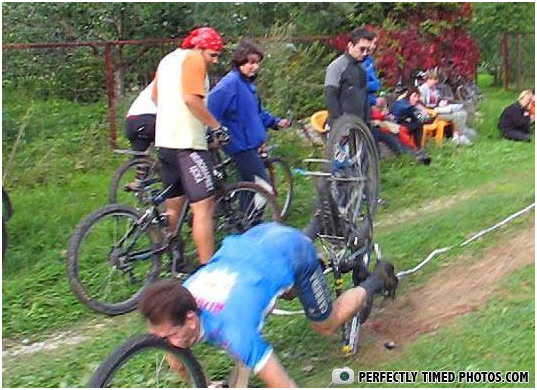
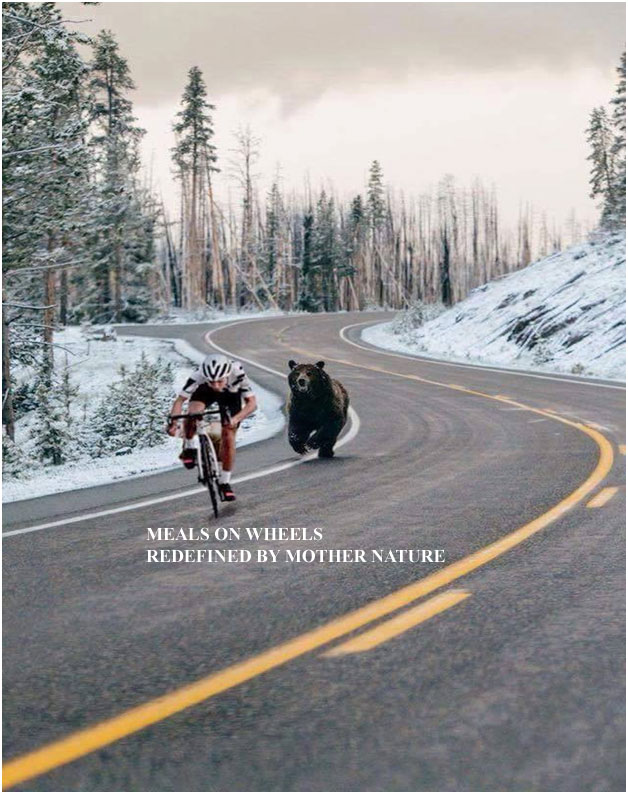
The Trails of Tears for the Rural Property Owners
Puget Sound AND Washington State AND Montana State
 |
 |
| 2013-10-01 Putting bicycles ahead of people |
A Few Reasons Why Property Owners Do NOT Want Trails Near Their Property |
1. Crime rate increases |
2. Trespass increases |
3. Liability increases |
4. Loitering increases |
5. Trash increases |
6. Accidents increase |
7. Noise increase |
8. Human and animal excrement increases |
9. Peace and quite in the neighborhood diminish |
10.Public lewdness increase |
11. Surrounding traffic and traffic connection increases |
12. Risk of fire increases |
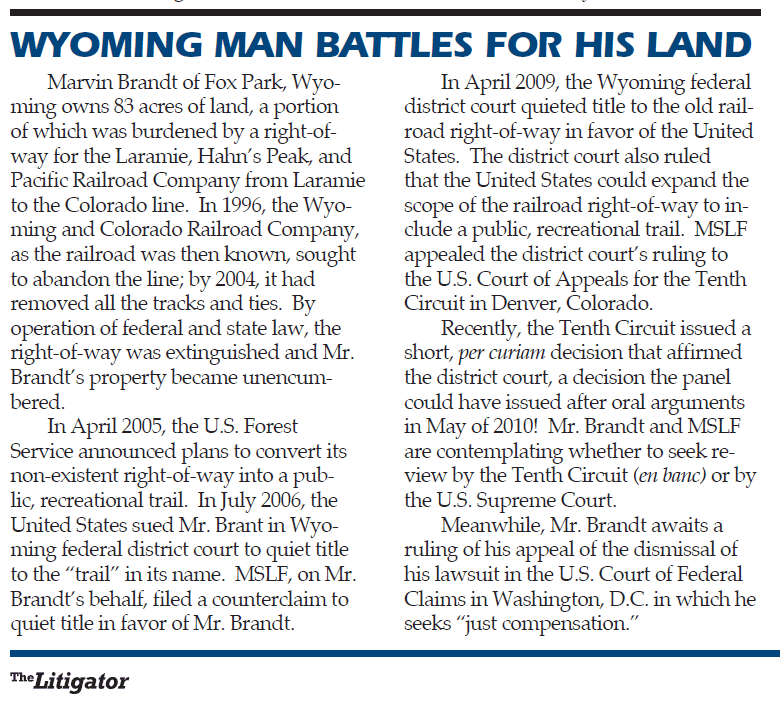 |
| Mountain States Legal Foundation - https://www.mountainstateslegal.org/LitigatorPDFs/LitigatorAutumn2012.pdf |
"Recent Supreme Court decisions such as Dolan vs. Tigard(14) suggest |
Puget Sound Washington Rails to Trails of Takings
Stop this nonsense taking of private and public property
if you see them coming here https://www.traillink.com/
Coming soon on YOUR property via the Rails To Trails CONgressional Act - Another Taking of property and life |
Failure of State Rails To Trails - Known Problems Experienced |
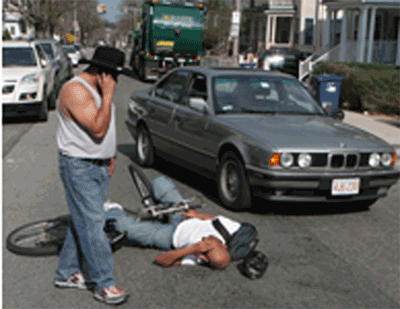
Stories Along The Trail of Tears and Takings |
1. October 27, 2007-A NARPO member sent me an article from the Omaha World Herald dated 10/11/2007 which describes how Crawford County, Iowa had to pay a stupid biker $350,000 because the biker couldn’t avoid a bump in one of the county’s roads and injured himself. Now the County has banned all bike traffic on its roads, especially an annual bike ride put on by some newspaper. And people wonder why most folks despise bikers https://home.earthlink.net/~dick156/ |
2. July 11, 2006-Here is an article about two women killed on a popular trail near Seattle. The trail zealots tell us popular trails are crime immune because so many people are on the trail. That does not seem the case! https://seattletimes.nwsource.com/html/localnews/2003124787_webhikersslain13.html |
3. March 12, 2007-Click on the following link to see a case from the federal appeals court from Virginia where the court ruled that a property owner can sue for a Fourth Amendment violation of search and seizure when a city allowed people to trespass on private property for trail use. This is another tactic we can use to get control of our property rights. https://pacer.ca4.uscourts.gov/opinion.pdf/052344.P.pdf |
4. **October 15, 2006-This is an article about how trail users are not the eco-friendly they make themselves out to be. https://www.washingtonpost.com/wp-dyn/content/article/2006/10/13/AR2006101301285.html?referrer=emailarticle July 11, 2006-Here is an article about two women killed on a popular trail near Seattle. The trail zealots tell us popular trails are crime immune because so many people are on the trail. That does not seem the case! https://seattletimes.nwsource.com/html/localnews/2003124787_webhikersslain13.html January 9, 2006—A Pennsylvania County Judge ruled for landowners in a very acrimonious case that has been ongoing for over 10 years. The judge ruled that the landowners owned the railroad right of way in fee simple title. Also there was not a federal rails to trails designation attached to the abandonment. The judge also ruled that the landowners can go ahead with their lawsuit against the trail groups on trespass and slander of title. |
5. 7/20/2005 The link below is the testimony to Congress of Chuck Cushman executive director of the American Land Rights Association, he has wonderful examples of trails gone amok because of the National Trails Act. As he points out about how trails mutate, first the trail advocates claim that only the "willing" landowners will be expected to host a trail. Then the trail folks get impatient, which is quickly followed by eminent domain. They and their government agencies have all the power, while lonely landowners are left to fend for themselves. here 4/15/05 Lawyer sues a town, resort, and 2 trail outfits when he gets injured on a recreational trail in Toronto.
A personal-injury lawyer filed a $1 million dollar lawsuit on behalf of himself when he got hurt on a trail after falling off his bike. A short article is followed by a bunch of bikers' comments. This is truly an inspiring event. Click here |
6. A court awarded the settlement based on past damages and potential future damage to the farm, which adjoins a recreational trail. Click here |
7. 4/4/05 Another very good court decision just came down for property owners on government grant rights of way. A very definitive decision by the U.S. Court of Appeals for the Federal Circuit says that property owners owning land abutting railroad rights of way where the right of way was granted to a railroad by the government, the right of way belongs to the abutting property owner. And if a rail trail has been put on the right of way after railroad abandonment, then the abutting property owner is due just compensation. To see a copy of the decision click here. This case is cited as: Hash v. U.S. 403 F.3d 1308 (2005). If any property owner fits into this category, then they can use this decision to get their just compensation for having a trail through their property. You might want to call either John Groen in the western states at 425-453-6206 or Nels Ackerson in Washington, D.C., at 202-833-8833. 8. A very good court decision just came down for property owners The case below is a hot link to a Federal Claims Court decision on a federally granted right of way that is being turned into a rail trail. The property owner won a big decision on the ownership issue of the right of way easement. The decision is written in a way that positively affects all government granted rights of way and overrides many adverse decisions. It is 33 pages long, but well worth reading for those property owners affected. If you have any questions, please email me. Dick Welsh--NARPO Click here. This case is cited as: Beres v. U.S. 64 Fed.Cl. 403, 427 (2005). |
9. 3/15/05 Hope for property owner abutting a rail trail A group of property owners in south central Washington State spent a lot of time following what a trails’ group and the railroad did after the trails’ group acquired the rights for a trail on an abandoned rail line. They discovered the railroad had sold off some land that disconnected the rail line from a connection to another rail line. It just so happens that the federal rails to trails law exists under the fiction that a railroad can restart service and connect it to the national rail system. If a railroad cuts the possibility of future connection to the national rail system, then the STB loses jurisdiction and the rail trail can disappear. A court case to decide just that has been filed. For further information you can contact the attorneys representing the property owners—Nels Ackerson at 202-833-8833. |
10. 12/13/04 Sprint, Qwest, Other Telecoms Face New Multi-Billion Dollar Threat. Think City of Tacoma Water and City of Enumclaw Natural Gas liability. The 7th Circuit Court of Appeals in Chicago on December 13, 2004 handed down a decision that exposes Sprint, Qwest, Level 3, and Williams to more than $3 billion of liability in federal and state class actions that we are pursuing nationwide. The decision reversed a controversial nationwide class action settlement favored by the telecom companies, which we had opposed. More details can be found in an article in Telephony Online. |
11. 7/20/04 A New Property Value Study by the City of Portland, OR., that shows owning land near or next to a trail or park devalues your property Click here to read and download a copy of this study. The City of Portland, OR., paid for this study to see if their regulations and spending were worthwhile from a fiscal standpoint. Living next to a trail was worst than living next to a cemetery for devaluation of your property’s’ worth. Anyone living next to one of these trails already knew this fact, but it took a ..... |
12. November 20, 2007-The following link is to a great court win for northwestern Ohio residents who have been battling their local park district since 1997 about a trail through their property. The park district built a trail and would not pay the resident for the “taking” even though the residents owned the land. The residents went through many court fights at the local level which they lost, but they prevailed at the Ohio Supreme Court on November 20th. Now the park district either has to pay all their court costs and just compensation for the land taken, or the park district must remove the trail which is probably what will happen because of the costs. But the resident’s attorney fees and costs will have to be paid anyway by the park district as the residents were very smart and sued under laws that allow attorney fees and cost to the prevailing party. Usually under American law, you have to pay your own attorney fees whether you win or lose, but there are some laws that allow recovery of attorney fees and costs which is why it is important to choose an attorney that knows what they are doing (most don’t) when it comes to property rights. See the case results here- https://www.supremecourtofohio.gov/rod/newpdf/0/2007/2007-Ohio-6057.pdf 13. The plan was scrapped because of steep terrain, but another bypass route across a hilltop near Eisenhower Boulevard remains an possibility. Fisher said he didn't fully explore that option in 2004 because https://www.tribune-democrat.com/homepage/local_story_314225101.html?keyword=leadpicturestory |
14. September 1, 2007- This is a quote by the U.S. Department of Transportation (DOT) Secretary Mary Peters. She told the media that 10 percents of federal gas tax is being spent on bike trails. She is 100 percent correct as the Transportation Enhancement Fund is mostly spent on bike trails, and the Enhancement Fund is 10 percent of the federal gas tax. “… there's about probably some 10 percent to 20 percent of the current [transportation] spending that is going to projects that really are not transportation, directly transportation-related… like bike paths or trails." U.S. Department of Transportation Secretary Mary Peters, Newshour with Jim Lehrer, Aug. 15, 2007
|
15. News Brief - Summer 2007: https://prfamerica.org/briefs/FL-HomebuyersCancelSales.html
Florida Home Buyers Cancel $41 Million in Sales After Public Access to Preserve is Disclosed
Miami-based Lennar Corp., one of the nation’s largest home builders, offered to return deposits to 130 buyers and rescind contracts, with interest, after real estate broker Mike Morgan revealed that an adjacent nature preserve would require limited public access through the properties, according to an article by Michael Corkery in The Wall Street Journal on July 21st. A total of 114 buyers cancelled $41 million in sales by accepting the offer.
|
16. Montgomery County, Pennsylvania, plans to condemn property for a trail after it loses lawsuit against owners
Montgomery County, Pennsylvania, lost in Pennsylvania Superior Court in 1999. It was a victory for 441 property owners who had faced the County’s attempt in court since 1990 to assert ownership to an abandoned railroad bed that it wanted to convert to a trail. Unfortunately for the landowners, who were concerned about privacy, safety hazards, and liability, the County revised the design for the trail along Perkiomen Creek, and in February 2001 resolved to start condemnation procedures in against five property owners who would not give up.
“William Weirman, whose mother owns one of the properties off Route 29 in Perkiomen Township, reacted to the commissioners’ actions with disgust,” according the report by staff writer Carl Hessler, Jr., in the Mercury, which reported the County Commissioners’ decision on February 9. “‘We of course don’t want the trail, but we can’t afford to fight it,’” Mr. Weirman said.
|
17. Testimony of Nels Ackerson Before the Committee on the Judiciary Subcommittee on Commercial and Administrative Law U.S. House of Representatives June 20, 2002. The nation’s leading attorney for property owners facing rails to trails Takings testified about the “extravagantly wasteful litigation” caused by the failure of the federal government to set up a procedure of compensation for landowners where land is expropriated under rails to trails. |
18. Mr. Hawker explained that their contract did not address trails and that it would be up to the property owner. He explained that eminent domain could not currently be used in order to build trails. https://www.vineyard.utah.gov/interior.asp?pageid=2066&prid=2928
|
19. “Corruption in Trail Funding” - Linda S. Rowley, Railroad Impact Committee of the Hilltowns (RICH), Tenth Annual National Conference on Private Property Rights (PRFA, Albany, N.Y., October 14, 2006)
While fighting a planned bike path through her barn in Haydenville, Massachusetts, Linda Rowley discovered that federal transportation enhancement funding that was exclusively for congestion mitigation and air quality improvement (CMAQ) was being misapplied for purely recreational purposes. She also won a ruling in the Massachusetts Supreme Judicial Court that the railroad right-of-way was a road or a way under the Derelict Fee Statute, making it ineligible for federal trail funds because the property belonged to the underlying owners after the railroad was no longer in use. https://prfamerica.org/indices/TrailsNatl-Index.html |
20. “Property Rights, Trails, & Open Space Preservation” - By Carol W. LaGrasse, Speech to the Comprehensive Planning Advisory Committee, Town of Ballston, June 22, 2005
Private property rights were fundamental to the founders and protected other rights, but a brief chronology shows that U.S. Supreme Court rulings dealing with zoning and open space have both eroded and protected these rights. Trails threaten private property owners with liability and other problems, but reversionary title is protected. https://prfamerica.org/indices/TrailsNatl-Index.html |
21. Grants Have Agendas” - By Carol W. LaGrasse, PRFA November 15, 2004
Government grants put never-ending streams of money toward preservationist objectives that diminish private property rights. Prime examples are National Heritage Areas, regional planning, trails, and government land acquisition. https://prfamerica.org/indices/TrailsNatl-Index.html |
22. Liability for Recreational Uses of Private Property - New York State Protections Leave Landowners Vulnerable” - By Carol W. LaGrasse (Property Rights Foundation of America Background Brief, January 2004)
In spite of the NY General Obligations Law’s protections for public-spirited property owners, the law’s exceptions and court decisions show that owners have liability to recreational and other users of their property where trails and recreational access exist. https://prfamerica.org/indices/TrailsNatl-Index.html |
23.Our Inalienable Heritage” - By Carol W. LaGrasse, Welcome Address, Seventh Annual N.Y. Conference on Private Property Rights (PRFA, Oct. 18, 2003)
Taking a look at the ways our rights are being eroded and setting history back on a path toward justice. Countervailing the soft-sell, long-term approach of moneyed interests - conservation easements, scenic byways, heritage areas, trails - the high-sounding tools of landscape preservation |
24. “The Proposed Roundout Creek Canalway Trail-Defending Property Owners” - By Joseph Havranek, Rondout Landowners Alliance, Seventh Annual New York Conference on Private Property Rights (PRFA, October 18, 2003)
A classic of successful activism. FOIL Requests revealed that the true intent of the local project in Rosendale and Marbletown was a 108-mile trail linking the Hudson and Delaware Rivers. The Rondout Landowners Alliance got the information to the people and went on the offensive |
25. Saratoga County Canalway Trail Shrouded in Secrecy—Trail Planned along Champlain Canal Route through Saratoga and Washington Counties” - By Carol W. LaGrasse (PRFA, October 22, 2002)
The New York State Canal Corporation, National Park Service, and the New York Parks and Conservation are very quietly garnering support for an elaborately planned proposal with federal funding to build an uninterrupted 26-mile trail along the active and abandoned Champlain Canal route from Waterford through Saratoga County, to be followed by another 22 miles through Washington County to Whitehall. The abandoned and active sections of the canal pass through or adjacent to private houses and backyards, businesses, farms, and other private property, but the property owners are not being given information. https://prfamerica.org/indices/TrailsNatl-Index.html |
26. ADDRESSING THE FLAWS OF THE RAILS-TO-TRAILS ACT - https://www.law.ku.edu/oldsite/jrnl/v8n3/v8n3p158.html
|
26. (a) The opinion also made short work of an attempt by the government to blur a distinction historically made by the courts between physical and regulatory takings. When the taking claim is based on the government's physical occupation of private property, then the government's action is of paramount importance. Such occupation constitutes a per se taking, regardless of its extent or impact on the property owner's use or expectations. If the taking claim is based on regulatory action, by contrast, then other things--like the owners' reasonable expectations at the time they bought the property--are important. Compare Loretto v. Teleprompter Manhattan CATV Corp., 458 U.S. 419 (1982) [physical occupation] with Penn Central Transp. Co. v. City of New York, 438 U.S. 104 (1978) [regulatory]. https://home.earthlink.net/~dick156/berger.htm
(b) The fact that the State of Vermont and the City of Burlington were the active violators of the Preseaults' rights did not relieve the United States of its responsibility, because it was the federal statute that authorized the taking in the first place. Whoever acted to take the Preseaults' land acted under federal authority. See Hendler v. U.S., 952 F.2d 1364 (Fed. Cir. 1991). It may make the folks in Congress feel good to exercise power. But when that exercise violates constitutional rights, there are consequences. https://home.earthlink.net/~dick156/berger.htm
(c) Mike Berger was the attorney for the Preseaults in the 1990 U.S. Supreme Court case challenging the constitutionality of 16 USC 1247(d), a.k.a. the rails to trails act.
|
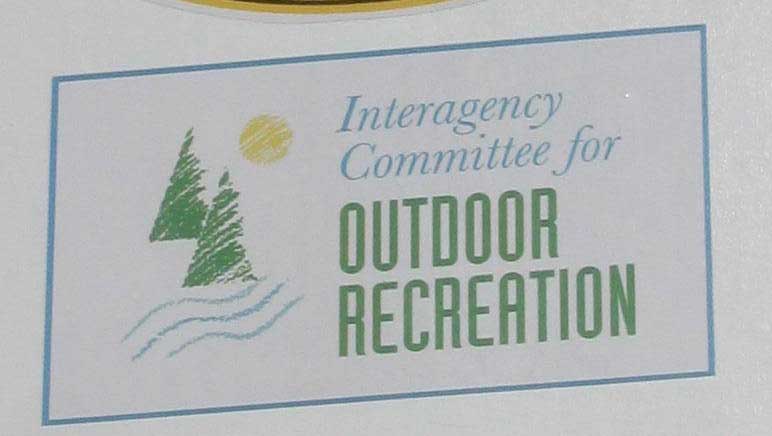
| Coming to your private property soon complilments of Washington State Interacgecy Committee 1000 Friends/Futurewise Director L(ie)awyer |
Everyone has a busines along SR164 except rural property owners |
PHOTO ON THE LEFT 1. King County Washington Capital Planning 2. King County Washington Senior Deputy Prosecuting 3. City of Enumclaw Washington Mayor |
PHOTO ON THE RIGHT Rural property owner Ed Storm and others, do not want this trail trespassing on or near his property.
|
| King County Assistant PA and Facilities Type & City of Enumclaw EX Mayor (Left Picture Left to Right) explaining how they have already taken rural property to railroad a million dollar plus bike trail for the urban elite. All for the betterment of the urban community of course and at the expense of rural private property owners unbeknownest to them. |
"The brain is a wonderful organ. It starts working the moment you get up in the |
| How to handle predetermined consensus meetings |
| The City of Enumclaw Mayor Must Step Down - He was subsequently voted out on a 70% vote by only those who voted IN The City Limits of Enumclaw for other reasons besides the Trails of Tears. |
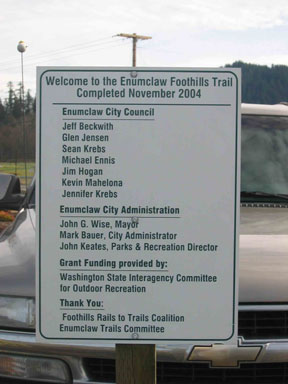
This is all about people Taking from A (property owners) and giving to B (people who want to go for a walk or bike out of their urbann homes while in complete ignorance of the consequences of what they are doing. |
Regarding WA State Interagency Committee of Outdoor Recration Would you believe most rural properly owners were not given a choice The State of Washington Interagency Committee for Outdoor The government and bike zealots cannot understand what the big deal Would you further believe the State of Washington Interagency |
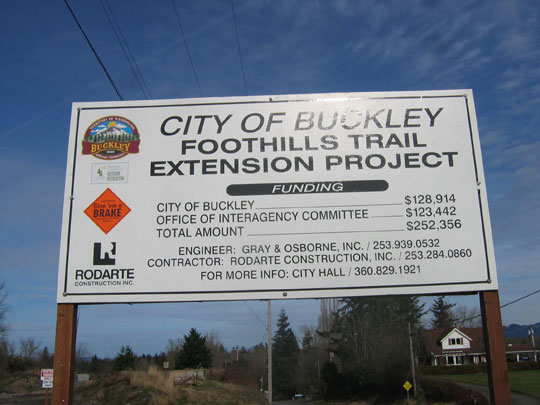
| This is the proverbial green triangle of taking, i.e. the government, green groups and a profiting green business who cannot make it in the free market, thereby they collude to take your property through the crooks in government |
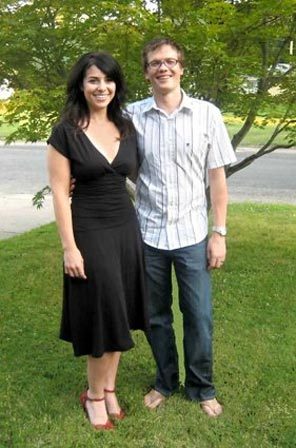
King County Washington has agreed to pay $3.5 million This is AFTER the county extorted hundreds of rural property |
